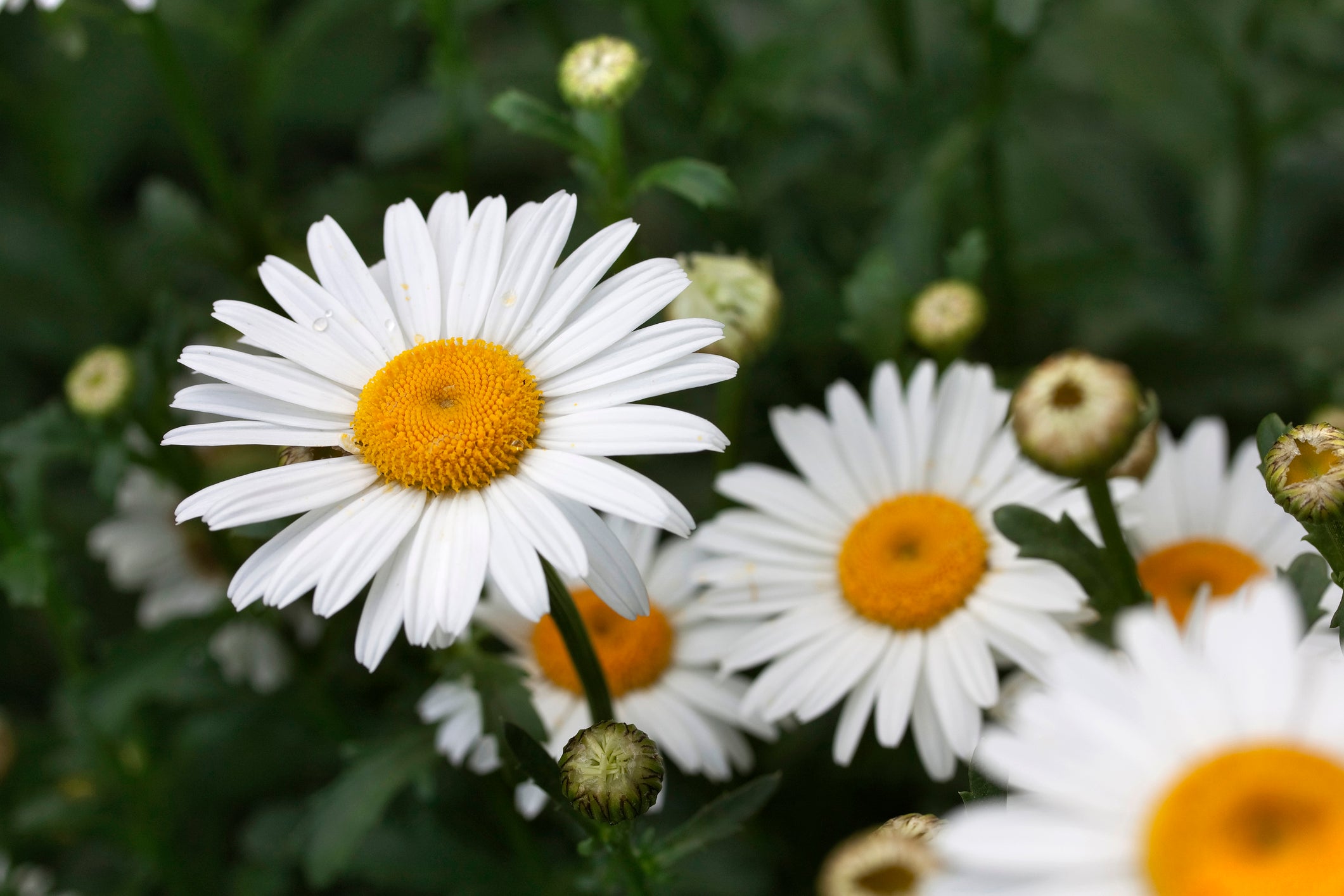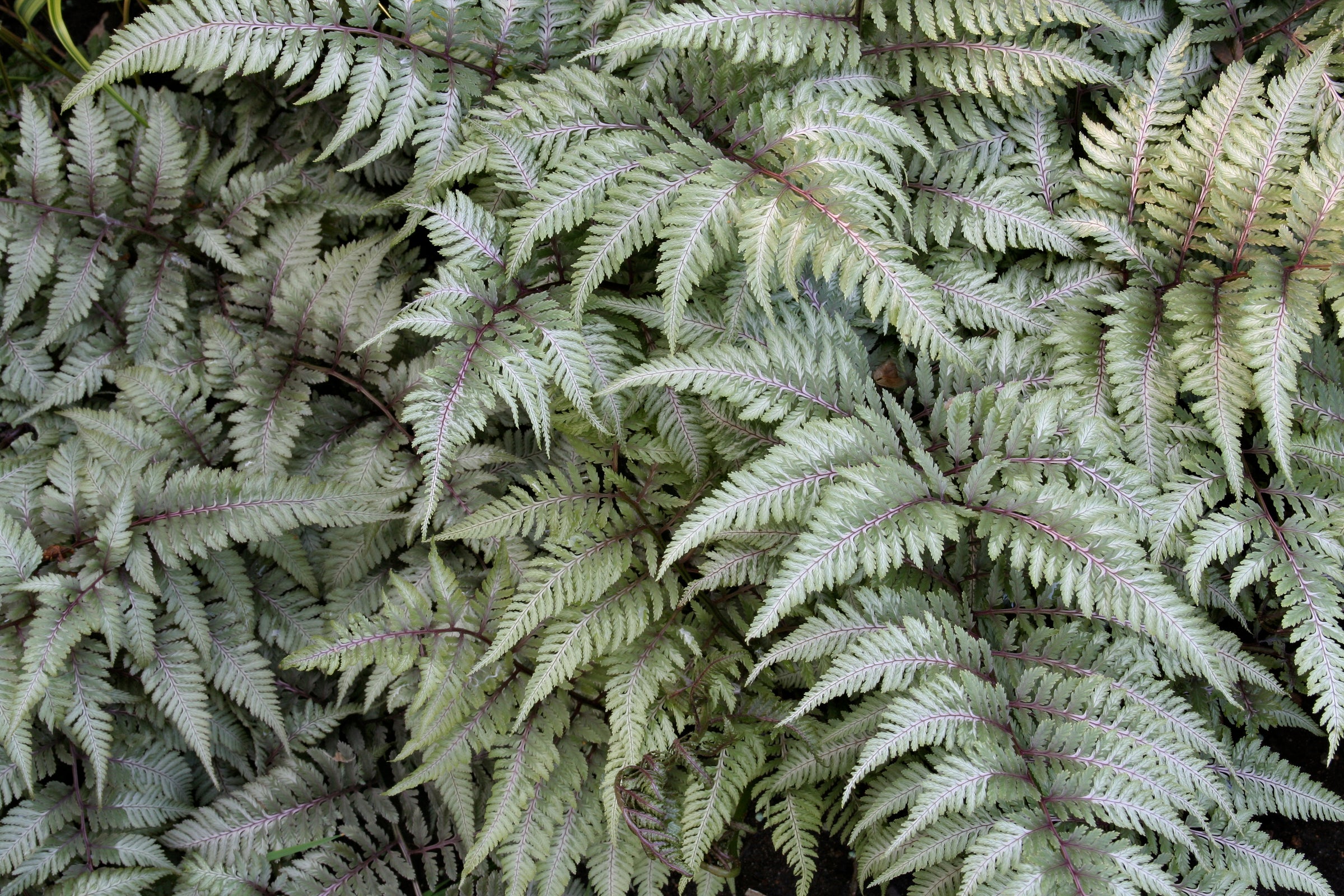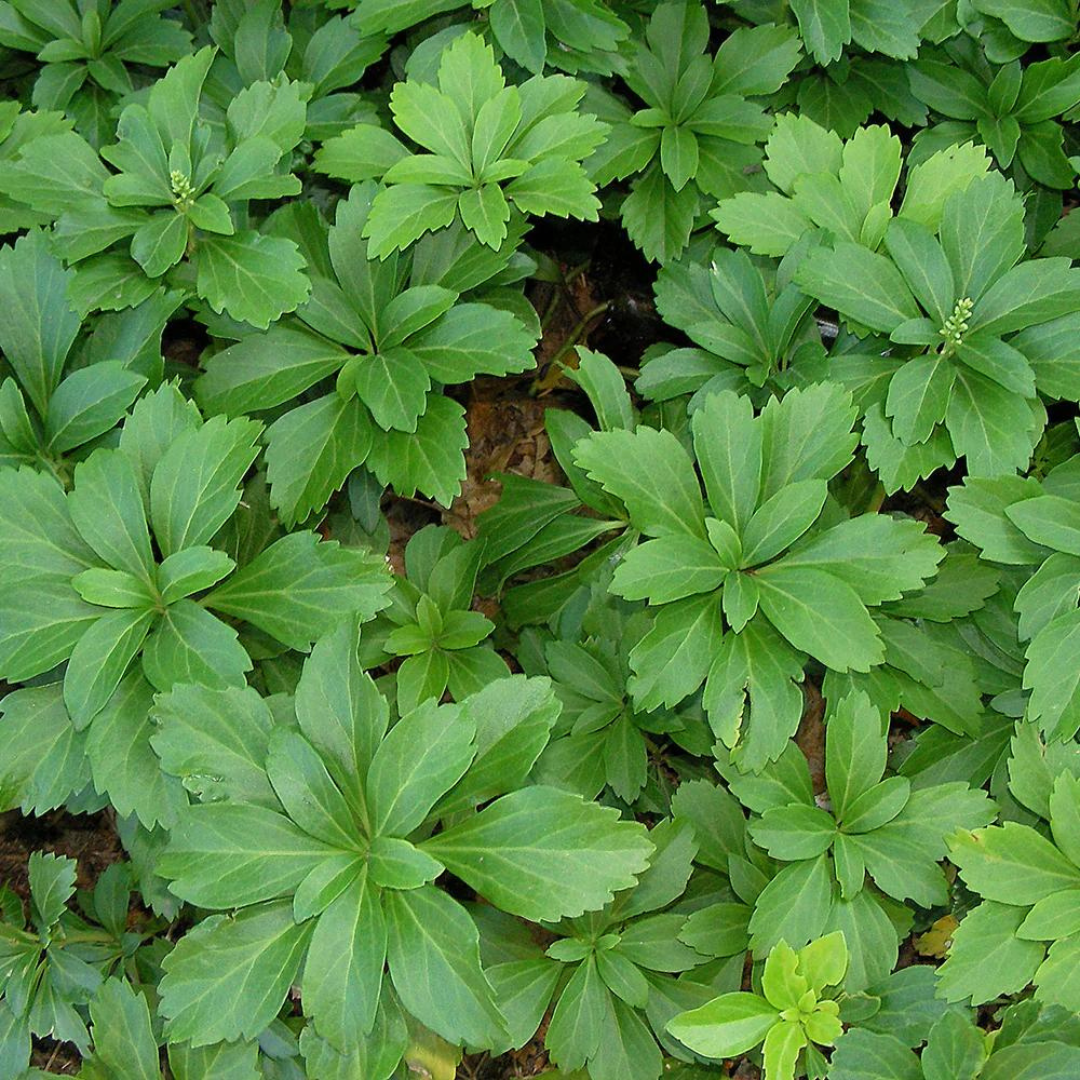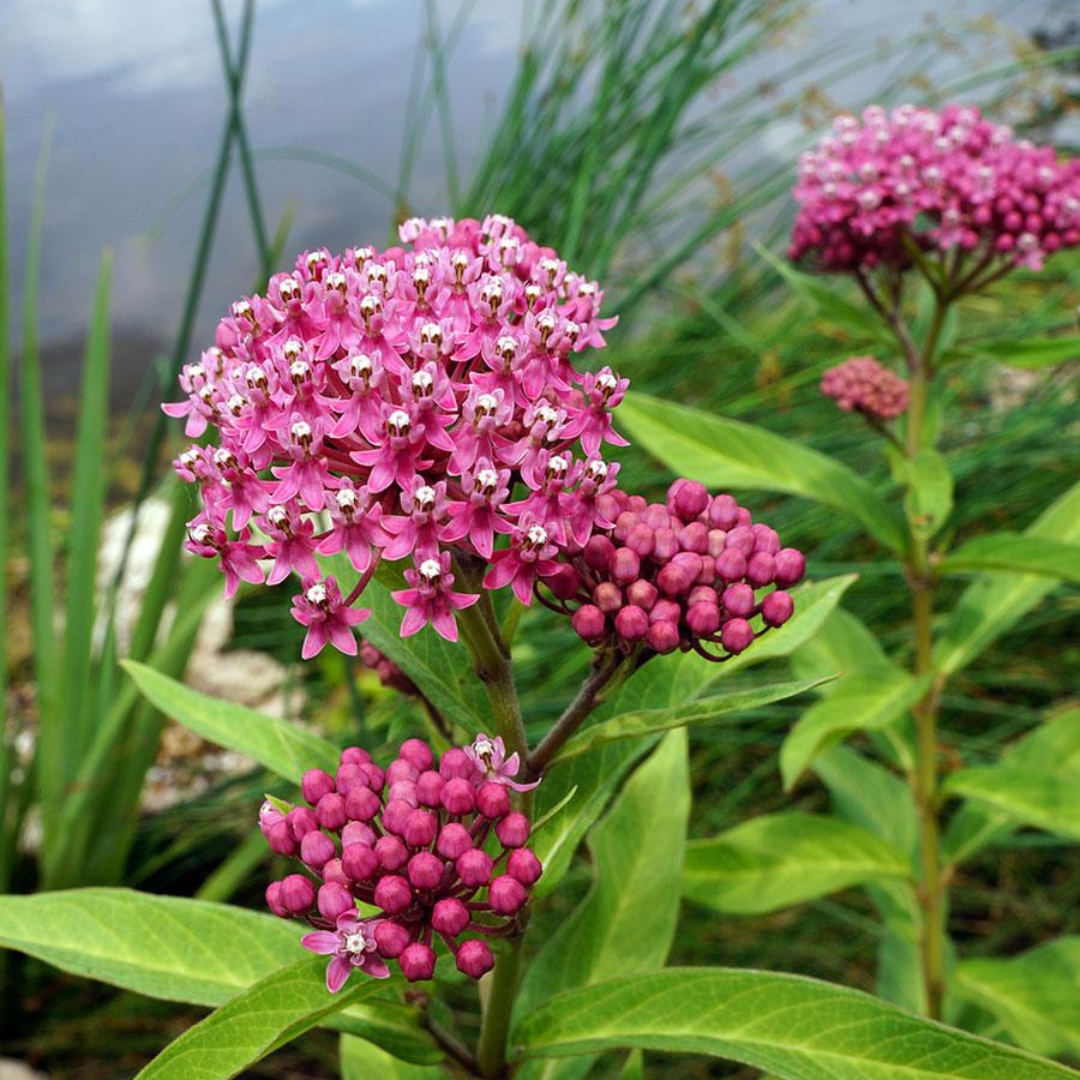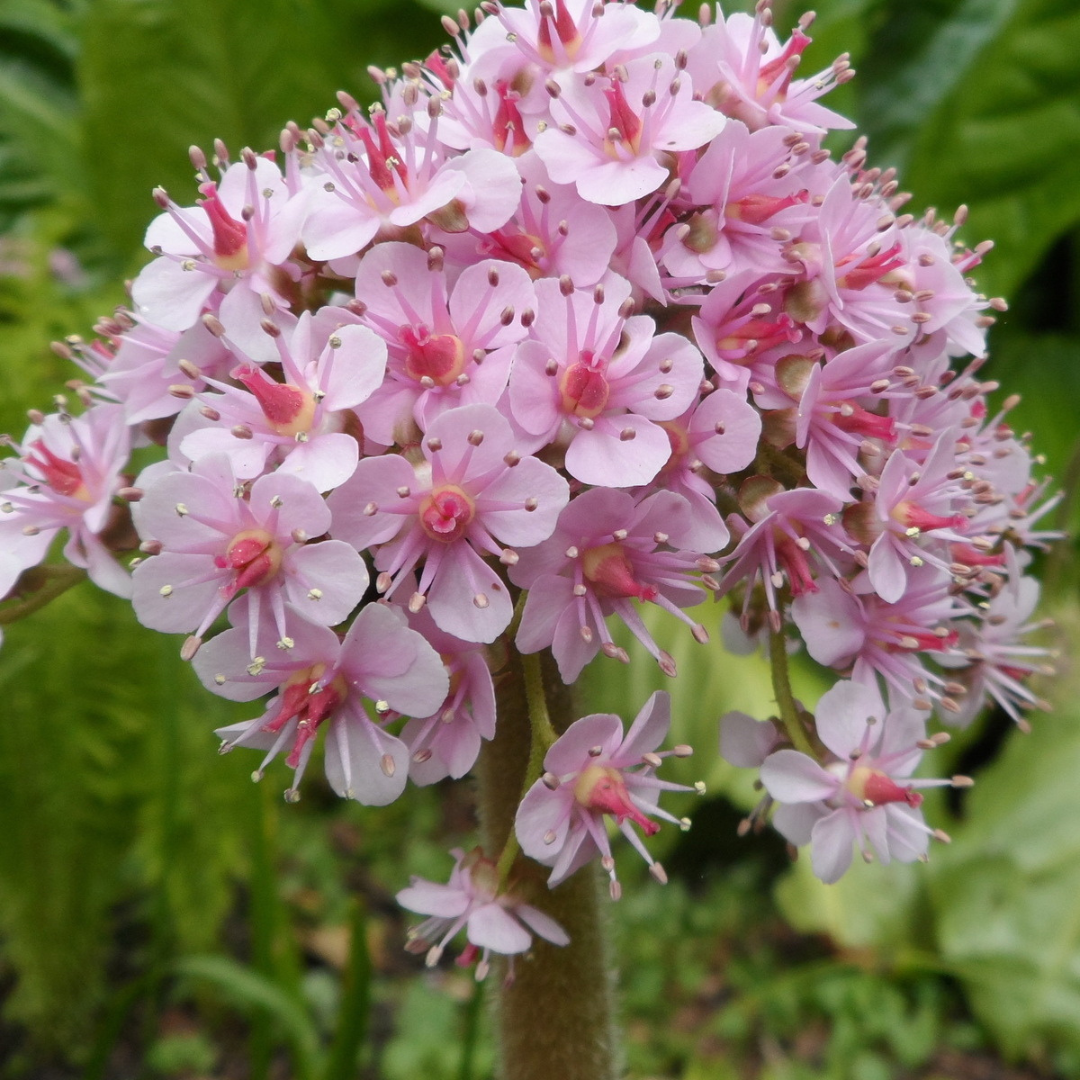
Darmera peltata
Add to Wishlist Full Sun
Full Sun
 Partial Sun
Partial Sun
- In stock, ready to ship
- Backordered, shipping soon
Darmera peltata: An Architectural Beauty Rising from the Waterside
Majestic and deeply textural, Darmera peltata—commonly known as umbrella plant or Indian rhubarb—brings a bold, sculptural presence to moist, sunlit gardens. Emerging in early spring, rounded clusters of soft pink flowers appear first, held aloft on bare stems before the foliage unfurls. Soon after, enormous, scalloped leaves spread like parasols atop tall stalks, casting dappled shadows and creating a lush, almost tropical feel. A striking choice for boggy borders, streambanks, or pond edges, Darmera peltata offers evolving seasonal interest, from its spring bloom to its dramatic foliage and bronzed autumn tones.
Plant Characteristics:
- Height: 60–120 cm in flower; up to 150 cm in leaf
- Spread: 90–120 cm, slowly expanding via rhizomes
- Flower Colour: Soft pink, forming rounded clusters on leafless stalks in early spring
- Flowering Period: Mid to late spring
- Foliage: Huge, rounded, deeply lobed leaves; bright green in summer, turning bronze-red in fall
- Sunlight Requirements: Full sun to partial shade
- Soil Requirements: Moist, rich, humus-laden soil; thrives in wet, boggy areas or alongside water
Uses and Benefits: Darmera peltata is ideal for making a bold statement in sunny or lightly shaded damp areas. Its early spring blooms provide one of the first floral highlights of the season, offering nectar to emerging pollinators. The dramatic foliage emerges just after flowering and provides architectural interest all summer, while suppressing weeds and shading the soil. Perfect for rain gardens, water’s edge plantings, or moist borders where visual drama is welcome, it blends beautifully into both naturalistic and refined designs.
Companion Plants: Pair Darmera peltata with Astilbe 'Montgomery', whose rich red plumes rise in midsummer and stand out against Darmera's bold green leaves. Add Dryopteris 'Brilliance', a moisture-loving fern with copper-toned new growth that echoes the warm hues of Darmera’s autumn foliage. Ground the planting with Asarum canadense, whose low-growing, heart-shaped foliage forms a lush carpet beneath, contrasting beautifully with Darmera's upright stature and filling in shaded pockets at its base.
Care Instructions: Plant in full sun to partial shade in consistently moist, humus-rich soil. Best sited near water or where the soil remains damp, though it can tolerate brief dry periods once established. Protect emerging foliage from late frosts. Remove spent flower stalks after bloom, and cut back foliage in late fall or early spring. Divide clumps in early spring every few years to manage size and reinvigorate growth.
History: Native to the streambanks and mountain meadows of the western United States, particularly California and Oregon, Darmera peltata has long been admired for its bold foliage and adaptability to wet conditions. The genus name honors German horticulturist Karl Darmer, while peltata refers to its shield-like leaves, where the stem attaches to the center. Though once a hidden gem of woodland and water gardens, it is now gaining popularity in bold, moisture-loving landscape designs.
Final Thoughts: With its early bloom, tropical-scale foliage, and love of sunlit, saturated soils, Darmera peltata brings stately drama and movement to the summer garden. When combined with the crimson plumes of Astilbe 'Montgomery', the copper-green textures of Dryopteris 'Brilliance', and the woodland softness of Asarum canadense, it creates a richly layered composition alive with form and seasonal contrast. A dynamic focal point for gardeners drawn to bold foliage and waterside elegance.


